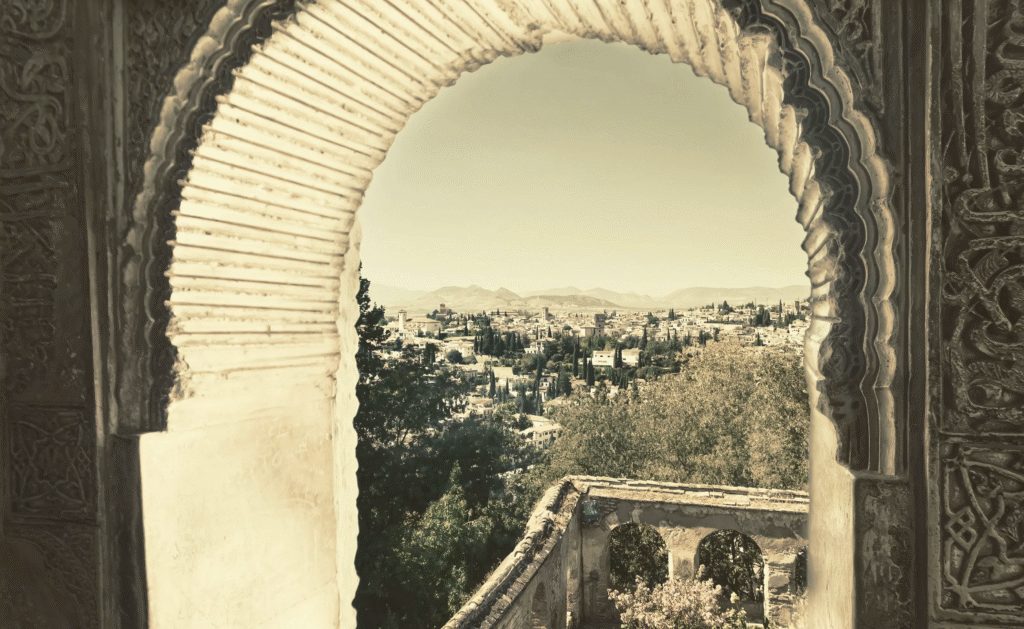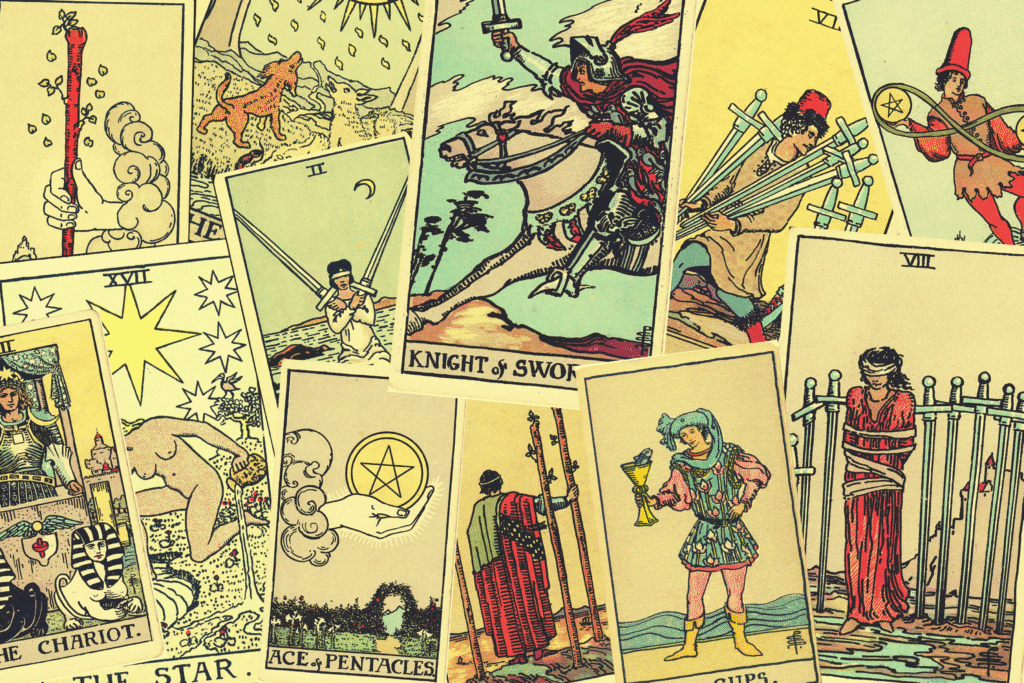
This guide to tarot cards for beginners explores just what it is about tarot that fascinates: perhaps it is the allure of hidden knowledge, the uncanny familiarity of the images, or the refuge it provides for those with restless enquiries.
To better understand its appeal, we need to untangle its history — from Renaissance parlour games to Instagram readings — and turn to the cards themselves: their symbols, their meanings, and the tools we use to interpret them.
I knew nothing about tarot prior to my first reading. I believed that it would allow me a glimpse of my future glories and misfortunes, and that I would be painfully aware that my destiny was being spread before my eyes, yet deliberately obscured by the words of the reader. I was prepared to be unsettled, perhaps even frightened. I thought Death was bad and… well, I didn’t know any of the other cards. I had thoughts and feelings, all laced with cultural references and my own trepidation. But as for knowledge? I had none.
My first tarot reading came about unexpectedly, and so too my reaction to it. It was all at once serene and heady. It was a sensation that, even in the midst of it, I greedily wanted to recapture again and again.
I surrendered to the pleasant lull of the cards, enraptured by the illustrations and puzzled over the meaning of the figures’ postures and props: their hand placements, their backs half-turned, swords resting, and wands held aloft. I wove my own stories, imagining myself as both knight and devil.
Yet, despite my prior thoughts, my anticipation of some kind of revelation, I remember nothing of the spread of the tarot cards or the words of the reader. The cards did not disclose anything to me — rather, what they revealed was my own response: my desperation for truth, guidance, and reassurance.
Though I delighted in the bliss and delirium of that first tarot reading, I realise that it was my urgency and willingness to be soothed, to find peace and meaning in my life, that gave rise to the intoxication.
I have not had a second reading. I am urged to, but before I do, I need to understand a little more about tarot cards and the practice so that I can find meaning in the cards.
A Short History of Tarot
Tarot began in the gilded courts of fifteenth-century Italy. Nobles in Milan and Ferrara commissioned hand-painted carte da trionfi, or ‘cards of triumph’ — lavish objects gilded with gold leaf and created for play, not prophecy. The early decks were shuffled for tarocchi games (a word sometimes linked to the idea of foolishness) and admired as much for their artistry as their amusement.
By the eighteenth century, the cards took on a more symbolic life. Writers began to claim that tarot’s origins lay in the Ancient Egyptian Book of Thoth. French occultists, such as Court de Gébelin and Etteilla, established the idea of tarot symbolism as the survival of a forgotten ancient wisdom. Their claims transformed tarot from a game into cartomancy.
Etteilla (Jean-Baptiste Alliette, 1738–1791) was a French occultist and tarot writer who helped shape the cards’ shift from game to esoteric practice. Publishing under his pseudonym, he brought tarot to a wider audience in the late eighteenth century. His most influential work was Manière de se Récréer avec le Jeu de Cartes Nommées Tarots, or ‘Manner of Recreation with the Game of Cards Named Tarots‘, the first book dedicated to interpreting the cards beyond play.

Chaos card (Le Chaos) from Etteilla’s tarot deck.
What began as a fashionable game was later recast as something allegorical: a portable theatre of forms — a symbolic language used for spiritual insight, divination, and what we now call tarot reading for beginners and beyond.
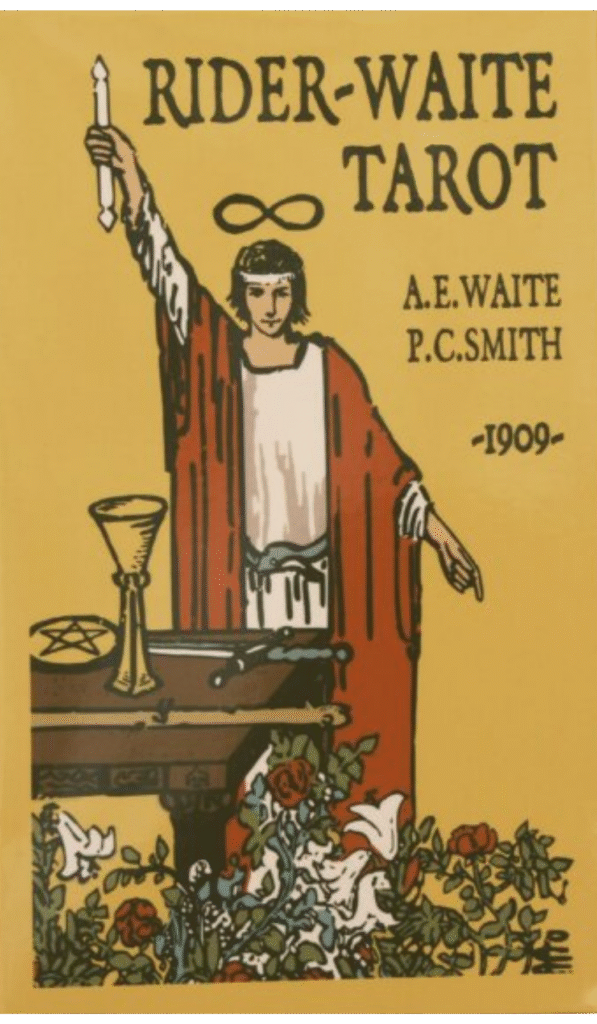
That shift prepared the ground for the most enduring of decks: the Rider–Waite–Smith, published in 1909. Conceived by Arthur Edward Waite, a poet and scholarly mystic, and vividly illustrated by Pamela Colman Smith, it gave tarot its modern language: the Tower struck by lightning, Death astride his pale horse, and the High Priestess hidden behind her veil.
What sets this deck apart is Smith’s decision to illustrate all seventy-eight cards, not only the epic figures of the Major Arcana but also the Minor suits. Everyday scenes — a quarrel of fives, a celebration of threes — gave readers something immediate to interpret. This made the deck more accessible, and it remains the foundation of most tarot teaching today.
Tarot has since entered the bloodstream of culture. It surfaced in the countercultural and New Age movements of the 1960s and 1970s, alongside astrology, the I Ching, and Jungian archetypes. From there, it began to shed its reputation as fortune-telling and instead took root as a tool for self-reflection and personal growth. Today, modern tarot circulates on Instagram feeds, in TikTok readings, on tarot apps, and in countless decks in shops and on e-commerce sites.
For many, the cards are less about predicting the future than about creating space to pause, imagine, and reframe the present. Each era has reinvented the cards for itself — shuffling to find new patterns.
Tarot for Beginners: Major and Minor Arcana Explained
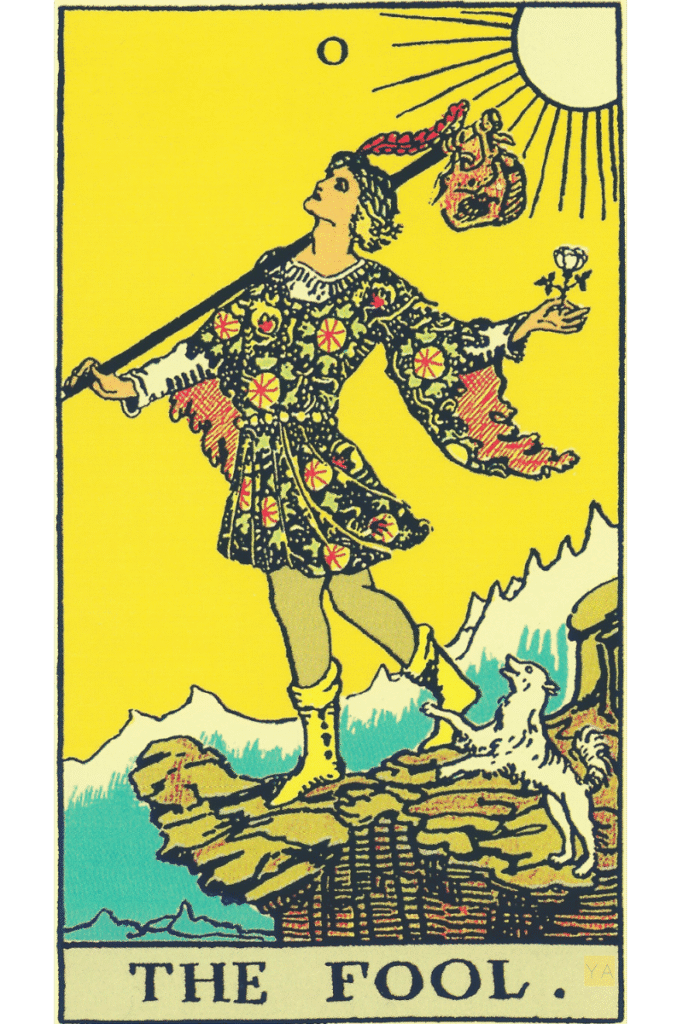
A tarot deck holds seventy-eight cards, and together they form an immense and intimate cast. Some speak like protagonists whilst others whisper from the wings. The division of the deck into Major and Minor is the foundation of all tarot card meanings — the structure that gives each card its role, whether as a major turning point or tracing the texture of daily life.
Major Arcana (22 cards):
These are the great markers — figures that seem to vibrate with inevitability. The Fool, numbered zero, steps from the edge of a cliff, a small dog at his heels, eyes lifted to the sky. He is innocence, beginning, risk: the leap into the unknown. The Magician raises his wand, The Lovers stand before an angel, and The World spins within its wreath… These tarot cards arrive not with trivia but with turning points: revelations, dissolutions, renewals. Their presence in a spread is less detail than declaration.
Minor Arcana (56 cards):
The daily players, quieter but no less incisive, are divided into four suits:
Cups (water) → emotion, relationships, intuition: tender, unstable, overflowing…
for example: Ace of Cups: the first swell of love or inspiration.
Pentacles (earth) → material world, money, career: solid, weighty, practical…
for example: Eight of Pentacles: skill built patiently through repetition.
Swords (air) → thought, conflict, clarity: sharp, restless, double-edged…
for example: Three of Swords: heartbreak, the cut of truth.
Wands (fire) → creativity, ambition, passion: urgent, combustible, creative desire pressing into form…
for example: Page of Wands: a spark of curiosity, a project not yet formed.
Taken together, the tarot deck is not a catalogue of fortune but a vocabulary of states — images that lean into us, insisting on interpretation.
How People Use Tarot
To some, tarot is an entertaining act, but for others it’s a mirror for the heart and mind. A card can look like a wound, a blessing, or a dare, depending on who draws it and when.
For some psychologists, notably Carl Jung, tarot offers a set of archetypes drawn from the collective unconscious — images that prompt reflection rather than prediction. This perspective has helped shape the modern view of tarot as a tool for self-reflection and psychological insight.
Tarot card uses vary — from mindfulness to self-examination to fortune-telling games. The meaning of a tarot spread depends as much on the reader as the cards themselves.
Self-reflection: Like journaling with pictures — a card drawn at dawn can colour the entire day.
Meditation and ritual: For others, tarot bookends their spiritual life — a pause, a blessing, a moment of clarity before choosing.
Social and playful: Amongst friends, tarot readings become entertainment — the mischief, the surprise of an image that feels too apt, an in-joke.
A Tarot Spread for Beginners

The three-card spread is the most popular spread for beginners and a simple way to learn how to read tarot cards.
In a three-card tarot spread, any card may appear — Major or Minor. Some readings draw only Majors, heavy with grand themes and turning points. Others draw only Minors, quieter but no less incisive, grounding the story in daily life. Most often, it is a mixture, the extraordinary brushing against the ordinary, the symbol leaning into the detail.
Below are two of the simplest three-card spreads for beginners. The cards are placed in sequence, each position shaping the meaning of the card within it.
Past – Present – Future
or
Situation – Obstacle – Advice
Before you draw, it helps to hold a question or a thought in mind — not to demand certainty, but to invite perspective. It might be the quiet pulse of a choice (‘Should I go on this date?’), or a broader wondering about where you stand and what awaits. The cards speak most when approached with openness.
Listen to the cards speak to one another: The Five of Pentacles limping at the foot of The Devil, The Knight of Swords charging into The Moon, The Page of Cups offering his fish to The High Priestess… The magic is not in the prediction, but in the interpretation of the dialogue — the way the images echo, contradict, or lean upon each other, and how your own mind stitches them into sense.
For example, imagine drawing:
Past — Six of Cups: A card of memory and return. Childhood, nostalgia, the way the past lingers in the present. It suggests innocence, but also the pull of what has already been — habits, attachments, the comfort of repetition.
Present — Nine of Swords: Sleeplessness, worry, a mind that will not rest. The image is stark — a figure sitting upright in bed, head in hands, nine swords looming overhead. It speaks of anxiety, the weight of regret, but also the awareness that the torment is in the mind, not in the room.
Future — The Star: A figure kneels by the water, pouring out renewal. The sky is full of stars, the horizon calm. It signals hope after turmoil, the slow return of faith and clarity. It is not a sudden resolution, but a patient healing.
Taken together, this spread tells a story: a past coloured by memory and longing, a present burdened by overthinking, and a future that offers lightness and perspective. It is not destiny, but dialogue: the cards ask whether you are ready to release old patterns, quiet the noise of worry, and lean into a calmer trust in what comes next.
Tarot in Culture and Art
Tarot has always been more than a tool for prediction — it has seeped into art, literature, and popular culture. Writers and artists have turned to the cards as symbols of fate, chance, and storytelling itself.
In literature, Italo Calvino’s The Castle of Crossed Destinies arranges entire narratives from shuffled tarot spreads: travellers sit at an inn, unable to speak, and lay out their tales through cards instead. T.S. Eliot, in The Waste Land, conjures Madame Sosostris, a sly, half-comic fortune-teller whose deck feels both menacing and absurd — a reminder of tarot’s power to unsettle and amuse in equal measure.
Artists, too, have been drawn to the cards. Leonora Carrington’s paintings bristle with witches, priestesses, and animal guides — that echo the figures of the Major Arcana. Salvador Dalí went further, creating a complete tarot deck in the 1970s, each card filtered through his surreal gold-saturated vision. And in Tuscany, Niki de Saint Phalle’s Il Giardino dei Tarocchi, or Tarot Garden, sprawls across a hillside: vast, glittering sculptures of The Empress, The High Priestess, The Hanged Man standing as inhabitable monuments to the archetypes.


David Bowie’s fascination with tarot flickered through the imagery of The Man Who Fell to Earth and his Diamond Dogs era. Countless films and TV shows since have used the shuffle of cards as shorthand for mystery and fate.
Reshaped through literature and art, tarot becomes a mirror for the collective imagination, and a reminder that tarot cards are not only read, but also endlessly reimagined.
The Castle of Crossed Destinies Italo Calvino
Dali. Tarot Johannes Fiebig
The Man Who Fell to Earth
Diamond Dogs
Beyond Rider–Waite–Smith: Other Tarot Decks
Though the Rider–Waite–Smith deck is the most widely used, tarot has a far broader family tree.
The Tarot de Marseille is among the oldest surviving traditions and still popular in continental Europe. Its imagery is simpler than modern decks — stark figures, bold lines, limited colour; but this austerity gives it a timeless authority. For many readers, its very strangeness sharpens the symbolism.
The Thoth Tarot, created by occultist Aleister Crowley and artist Lady Frieda Harris in the mid-twentieth century, draws deeply from astrology, Kabbalah, and esoteric philosophy. Its imagery is bold, abstract, and dense with hidden correspondences. Some find it overwhelming, others revel in its complexity, but no one could mistake it for ordinary.

Lady Frieda Harris (1877–1962) was a British artist and occultist best known for painting the Thoth Tarot under the direction of Aleister Crowley between 1938 and 1943. Trained in the arts but drawn to esotericism, she brought a modernist, abstract sensibility to the cards, weaving colour theory, geometry, and symbolism into their design. Though she worked in Crowley’s shadow, her contribution was immense — without her hand, the Thoth Tarot would not possess its luminous, visionary character.
Today, artists continue to reinvent the form. Contemporary decks reflect diverse cultures, aesthetics, and identities: minimalist black-and-white decks, vibrant feminist reimaginings, indigenous and queer interpretations, even meme-inspired versions circulate on Etsy and Instagram. Each is a reminder that the archetypes are never static — they shift with the hands that redraw them.
For beginners, the Rider–Waite–Smith deck remains the most approachable starting point, thanks to its rich illustrations and wide availability. Yet, exploring beyond it reveals how alive the tarot continues to be: a tradition both rooted and restlessly reinvented.
Rider—Waite—Smith
Tarot de Marseille
Thoth Tarot
Tarot Resources and Books for Beginners
For those ready to shuffle their own cards, a wealth of guides and tools can help light the way.
Among the classics, Rachel Pollack’s Seventy-Eight Degrees of Wisdom remains the gold standard — rich in depth yet accessible enough for beginners. Mary K. Greer’s Tarot for Your Self takes a more personal path, using the cards as prompts for reflection and journaling.
For structured learning, Sarah Bartlett’s The Tarot Bible and Joan Bunning’s Learning the Tarot offer clear, lesson-like progressions that ease readers into spreads and symbolism step by step.
Modern voices continue to expand the field. Benebell Wen’s Holistic Tarot bridges traditional interpretation with psychology and mindfulness, making tarot feel at home in contemporary wellness.
And for those who prefer to learn interactively, digital tools abound: the Labyrinthos app gamifies tarot study, while YouTube brims with readers who demonstrate layouts, discuss meanings, and share their own approaches.
Whether through a trusted book, a modern voice, or an app on your phone, tarot offers many points of entry. The key is simply to begin — to draw a card, turn it over, and let it start a conversation.
Seventy-Eight Degrees of Wisdom Rachel Pollack
Tarot for Your Self Mary K. Greer
The Tarot Bible Sarah Bartlett
Learning the Tarot Joan Bunning
Holistic Tarot Benebell Wen
Why Tarot Endures
Perhaps tarot endures because it stands at the crossroads of art, psychology, spirituality, and storytelling. The images are thick with symbols — roses, rivers, swords, and suns that speak less to reason than to recognition. They are poetry shuffled and dealt across a table.
Flip a card and you see not only a beautiful picture, but centuries of layered associations. The Hanged Man hangs serenely upside down, light circling his head. Suddenly you are thinking of surrender, of perspective, and of the clarity that comes only through stillness.
The process of reading tarot cards for beginners is as much about imagination as instruction. Tarot is not a crystal ball. It is a lens for self-reflection and personal growth. A lens that poses as many questions as it cedes answers.
Between the cards
A deck of tarot cards can be intimidating, but remember: it began as a game, and it remains one, in a way — a game that can make you laugh, cry, or reflect more deeply than you expected.
You don’t need to be psychic. You don’t even need to believe. You need only the willingness to sit with an image, turn it over in your mind, and ask: what might this mean for me today?
Tarot survives not because it predicts — but because it prompts. Whether you treat it as sacred, symbolic, or simply curious, dealt one card at a time, it offers a language for the questions we don’t quite know how to phrase — a lens for looking at ourselves anew.
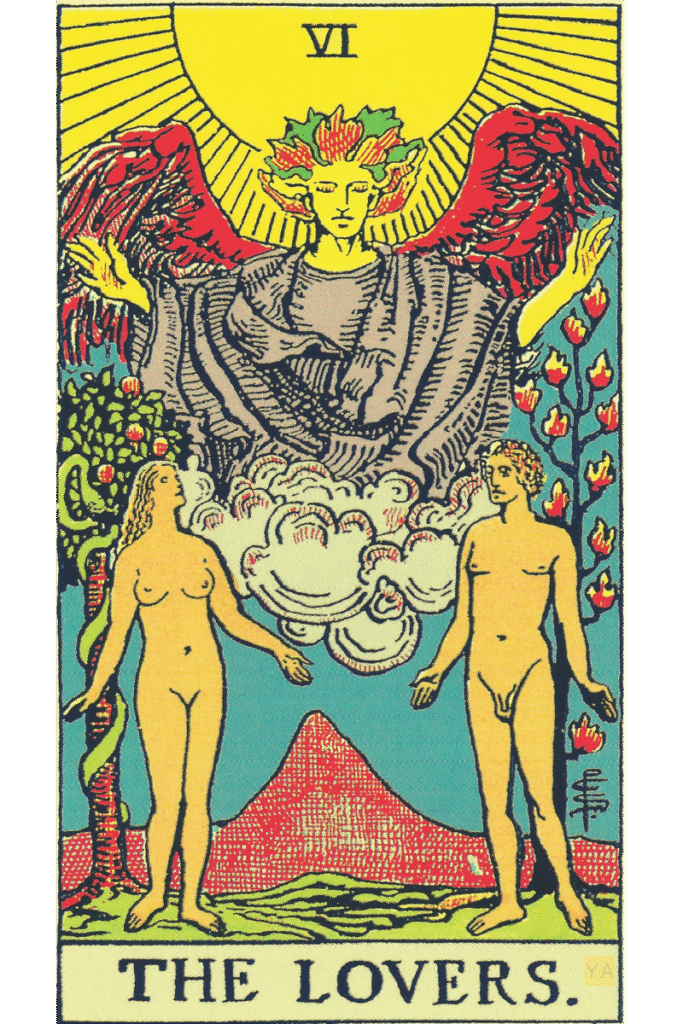
Some of the links in this article are affiliate links. If you buy through them, Yellow Agora may earn a small commission — at no extra cost to you.

